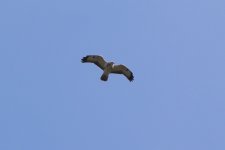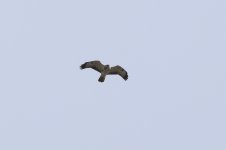The Kerreran
Has hat, will stand in the rain
I've been umming and ahhing about this for days, finally decided to bite the bullet and ask you fine people.
The local gulls went off at ~1130 local and I picked this up from my kitchen window. One look at the underwing had me scrambling for the camera, and I got these two shots, craning up through the glass, before I lost sight of it. Both lightly cropped only.
Alas, the bird had clearly been sitting in a muddy field, so the lower belly and underside of tail are stained, hiding most of the patterning.
Common is very common and the default raptor hereabouts, with the last accepted 'other one' in 2008 [we are really not Norfolk here..], thus my caution.
So, is this an educational bird or do I need to bother the County committee?
The local gulls went off at ~1130 local and I picked this up from my kitchen window. One look at the underwing had me scrambling for the camera, and I got these two shots, craning up through the glass, before I lost sight of it. Both lightly cropped only.
Alas, the bird had clearly been sitting in a muddy field, so the lower belly and underside of tail are stained, hiding most of the patterning.
Common is very common and the default raptor hereabouts, with the last accepted 'other one' in 2008 [we are really not Norfolk here..], thus my caution.
So, is this an educational bird or do I need to bother the County committee?








